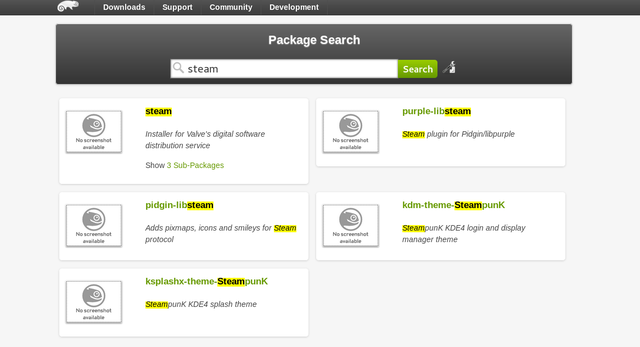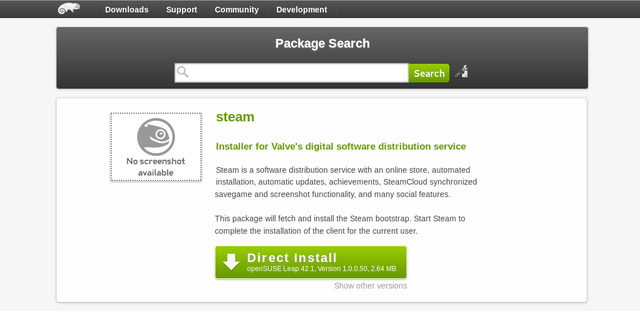openSUSE is a staple of the Linux community. But even long-time open source advocates find themselves wondering what sets the distro apart. Lacking the clear direction of Ubuntu or the free software advocacy of Fedora, openSUSE can seem to lack vision.
Fortunately, that isn't the case. There are good reasons openSUSE continues to attract users, and here are some of them. Maybe you will be the next person to fall in love with the Geeko.
Some Background on openSUSE
openSUSE has a long history under many names. The distro began in Germany, coming from a company called für Software und System Entwicklung mbH (Company for Software and System Development). S.u.S.E was a service provider, one that also printed UNIX/Linux manuals and offered technical support.
The company released its first distro under the name S.u.S.E Linux in 1994 on floppies and CDs. Two years later, version 4.2 followed 1.0 (a reference to the number 42 from the Hitchhiker's Guide to the Galaxy). By 1997, S.u.S.E was the largest Linux distributor in Germany and was starting to expand into the Americas and Asia, with S.u.S.E. LLC headquartered in Oakland, California. The dots went away the following year, when S.u.S.E became SuSE.
Novell purchased the company in 2003 and changed the name to SUSE, which was no longer an acronym. Two years later, Novell announced the creation of openSUSE, opening up development. From then on, SUSE's development process would no longer take place entirely in house.
Then Novell became part of The Attachmate Group, which purchased the former in 2011. A few years later, in 2014, the latter merged with Micro Focus. These days openSUSE remains one of the largest open source communities in the free software world.
Now, why might you want to join?
1. Fixed or Rolling Releases?
Commercial operating systems often get an update every few years. Many Linux distros, such as Ubuntu and Fedora, launch every six months. Some are annual. Others come after two years. Some don't have official releases at all.
Distros that don't have fixed released cycles recieve a steady stream of updates instead. Examples include Arch Linux and Gentoo. After installing either of these distros, you can continue using them for as long as you want. New versions of GNOME, KDE, Firefox, and LibreOffice will pour in alongside other system updates.
Most distros are either fixed or rolling. openSUSE is both. The latest stable release is Leap 42.1. If you prefer rolling, spin up Tumbleweed instead.
2. Choose Your Own Desktop
Most of the more prominent Linux distros prioritize a particular desktop environment. Ubuntu has Unity, Fedora focuses on GNOME, Linux Mint has Cinnamon, Elementary OS is doing its own thing, and the list goes on. Ubuntu, Fedora, and Mint each offer spins with different desktops, but these often feel like second-class citizens.
This means users who know their way around one distro (terminal commands, file hierachy, etc.) may feel compelled to change when they grow tired of a particular environment or the default interface makes changes that they don't feel comfortable with. They can settle for a potentially inferior experience on their native distro, or they can look elsewhere.
With openSUSE, this choice is unnecessary. Whether you prefer KDE or XFCE, you're in for a comparable experience. openSUSE sees its job as not to focus on one particular environment, but to make sure whichever one you choose is a reliable experience.
3. Manage Your System from a Single App
The Unix philosophy traditionally insists on a specific tool performing a single task. This is in stark contrast to the Windows ecosystem, where bloated apps often do as much as they can.
openSUSE's YaST is yet another setup tool, but this one does everything. Add repositories, tweak the bootloader, manage partitions, adjust displays, edit networks, and more -- all from a single place. And when YaST can't do the job itself, it directs you to the app that can.
I've never been much of a fan, but different strokes for different folks. While you don't need to use YaST to enjoy openSUSE, the app is a unique part of the experience.
4. Find or Distribute Apps with the openSUSE Build Service
Linux isn't an easy platform to develop for. Sure, it's not too hard to create a piece of software that works. But each distro packages software in slightly different ways, uses different packaging tools, and has its own quirks. Supporting all of them can be a headache.
Developers from Canonical and Red Hat have looked at this problem and decided they can fix it by creating competing universal package formats. Whether that works will depend on if other distros adopt either one.
openSUSE has taken a different approach. For a decade now, the project has developed a platform where developers can upload software and package their work for different distros. They don't need an understanding of the nuances between Ubuntu, Fedora, and openSUSE. The Open Build Service (originally just the openSUSE Build Service) takes care of that for them.
I list this as a reason to use openSUSE, but really, this benefits the open source ecosystem at large. It just so happens that most of the software will also run on openSUSE. It's also a sign of the project's pragmatism to see it bring an idea like this to fruition. Head on over to build.opensuse.org to check things out for yourself.
5. Get Apps Easily With 1-Click Install
Finding or distributing software in the openSUSE Build Service is one thing. How do you install it? Turns out, answering that is as easy as clicking a button.
One the site, there's a silver 1-Click Install button that saves you from having to manually add repositories and search for apps. A pop-up will appear that does the work for you instead. Simple.
These buttons appear all over the openSUSE Build Service site, but that's not the only place you can find them. Blogs can share links to install software directly, rather than tell you to go grab the app yourself.
This feature has been part of openSUSE since 2007.
6. The Geeko
openSUSE has one of the coolest, most recognizable mascots in the open source world. How much does that matter? I don't know. But I like the geeky gecko, and it's nice to see the openSUSE desktop stay green after all these years.
Are You Seeing Green?
Suffice it to say, this distro has a clear role to play. In an environment filled with distros that establish clear preferences, it's nice having a stable option that leaves many of the choices up to you. After all these years, openSUSE remains a good way to see the best of what Linux has to offer?
Have you ever tried openSUSE? What do you think sets the distro apart from others? Isn't the Geeko awesome? Agree or disagree in the comments below!



